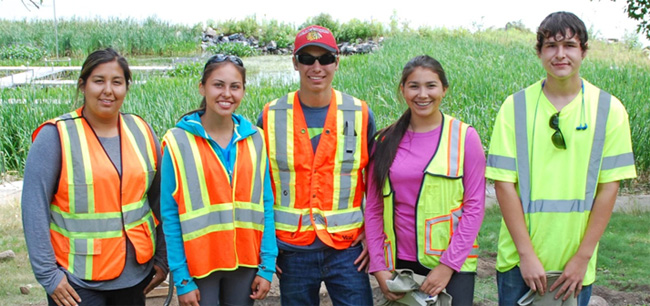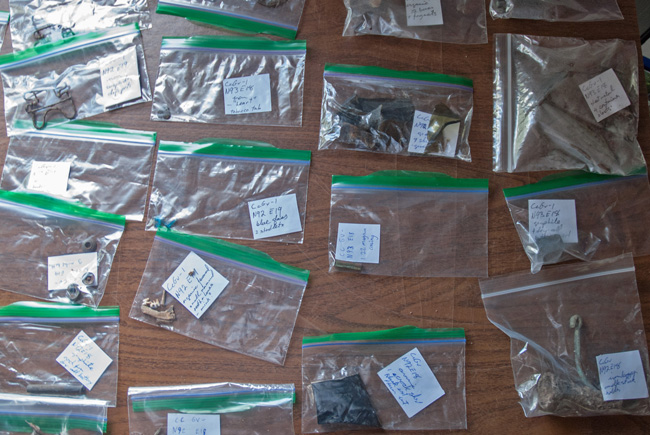The Archeology Project – students dig it


By Kelly Anne Smith
NIPISSING FIRST NATION – The Archeology Project has had a second successful year. Employing youth to work with a professional archeologist, Nipissing First Nation is conducting an archeological study of traditional territory.
Chief Scott McLeod called the project important with people having lived on Lake Nipissing since time immemorial. “It is critical to document and celebrate Nipissing First Nation’s history and ancestors.”
NFN Lands Department and Archeology Field School hosted a special information day for elders and seniors on The Archeology Project. A presentation was given on the progress of the dig and the findings so far.
Head archeologist Ken Swayze said 400 test sites were dug up from the Marina building area to the creek. The dirt from the test holes was sifted through carefully. “The students have identified five hotspots in Beaucage Park. There might have been a log cabin here and a stable there. We found some 19th C. coins here.” Swayze says it was exciting finding three significant dwelling sites not known before.
Swayze explained that Nipissing First Nation had a school established long before any foreign education policy was forced on them. Found artifacts were displayed for viewing with maps explaining their location. An appreciation feast was held afterwards.
Participant Suzanne Goulais-Deering is very interested in learning her history. “To know the journey that our people went through and to see this is amazing. I’d like to see a place to house the artifacts on Nipissing First Nation.”
Chief McLeod agreed that it would be beneficial to have a housed collection. “One of the options that we are going to look at with public consultation is will it be a park as it was before or is it going to be a cultural based park that offers education and tourism. We will consider staff recommendations.”
Chief McLeod told the crowd about the importance of The Archeology Project in employing Nipissing First Nation youth to educate them about community life and their cultural heritage. Lead Ranger Briana Chevrier got involved with the Youth Rangers by working with the Nipissing First Nation Natural Resources department. NFN Employment and Training Manager Brenda Restoule called when funding became available for the opportunity in the Youth Ranger Program.
Chevrier has thoroughly enjoyed her second summer as the lead ranger of a team of secondary students aged 15 to 17 yrs old. She is set to graduate as a Fish and Wildlife Technician after one more semester of hitting the books at Sault College. “This archeological dig is not all we do. We work in all aspects of natural resources. This is considered working with our lands. We also work with fish and water. We also attended Sault College for a three day educational workshop which was a good introduction to the Fish and Wildlife Technician Program. ”
With her diploma in hand, Chevrier hopes to return to her community for permanent employment. Chevrier credits Nipissing First Nation Natural Resources for helping her realize her passion for her work.
“I really didn’t know what field I wanted to pursue. But when I earned a position with NFN Natural Resources, I thought to myself, I love this. And that’s when I started school at Sault College.”
The Lands Department and The Archeological Project employed 12 students during the summer to work under the direction of Swayze, double the number of students since last year. The students were employed in a variety of field work experiences learning the proper use of tools for archeological techniques.
Funding support came from the Ministry of Natural Resources for the Stewardship Youth Ranger Program, Nipissing University, Yes Employment Services and the Nipissing First Nation Enhancement Fund. Ken Swayze who also teaches Introduction to Archeology at Nipissing University previously found evidence of Nipissing First Nation occupying their land 10,000 years ago when he was working on a contract with Ontario Hydro on NFN territory above Yellick. “Way up high, there were quartz veins with little dwellings and tents rings. They were extracting quartz from a quartz vein. The site is so old that any organic material is gone and the bones have dissolved. The only thing that remains is the quartz tools.”


